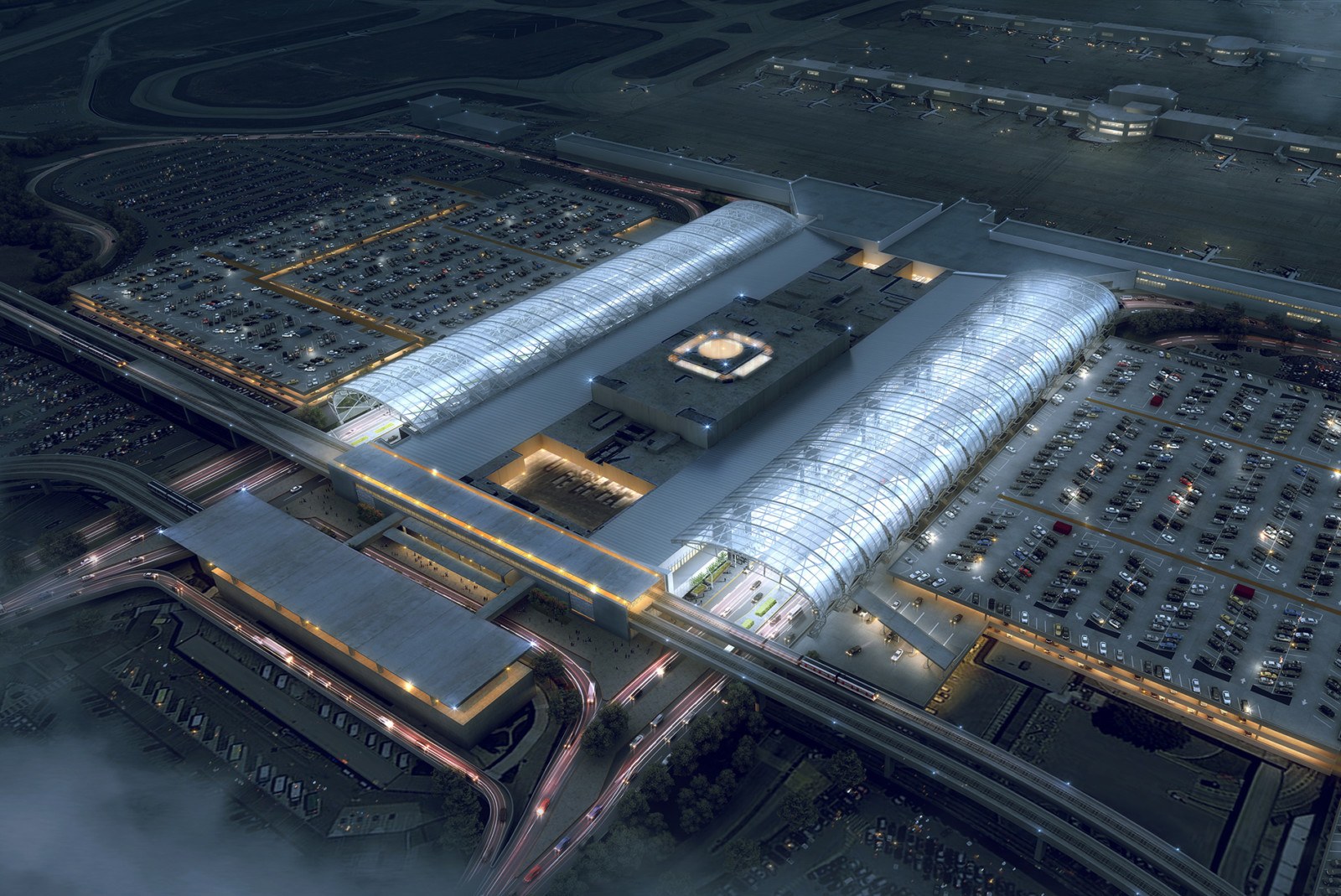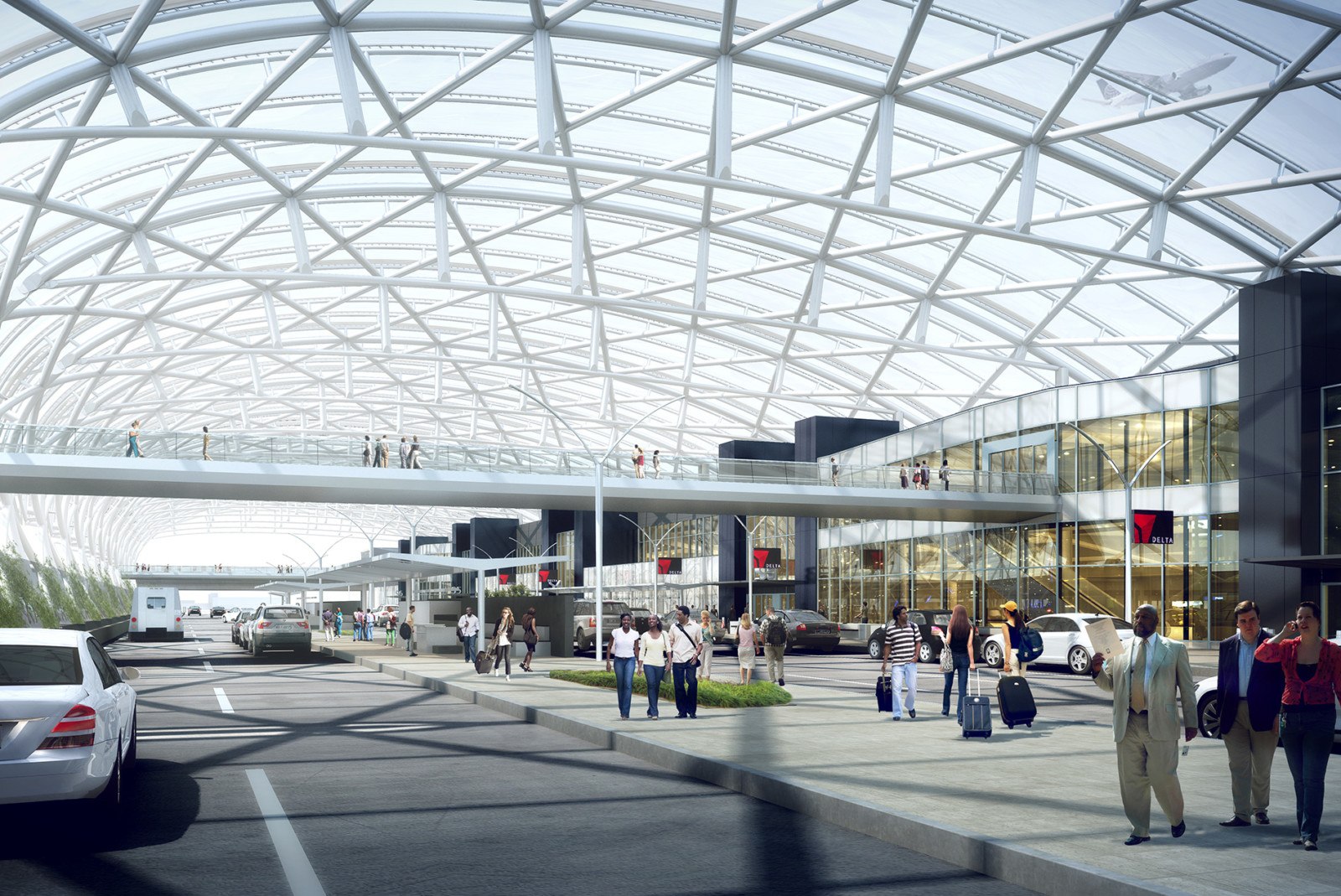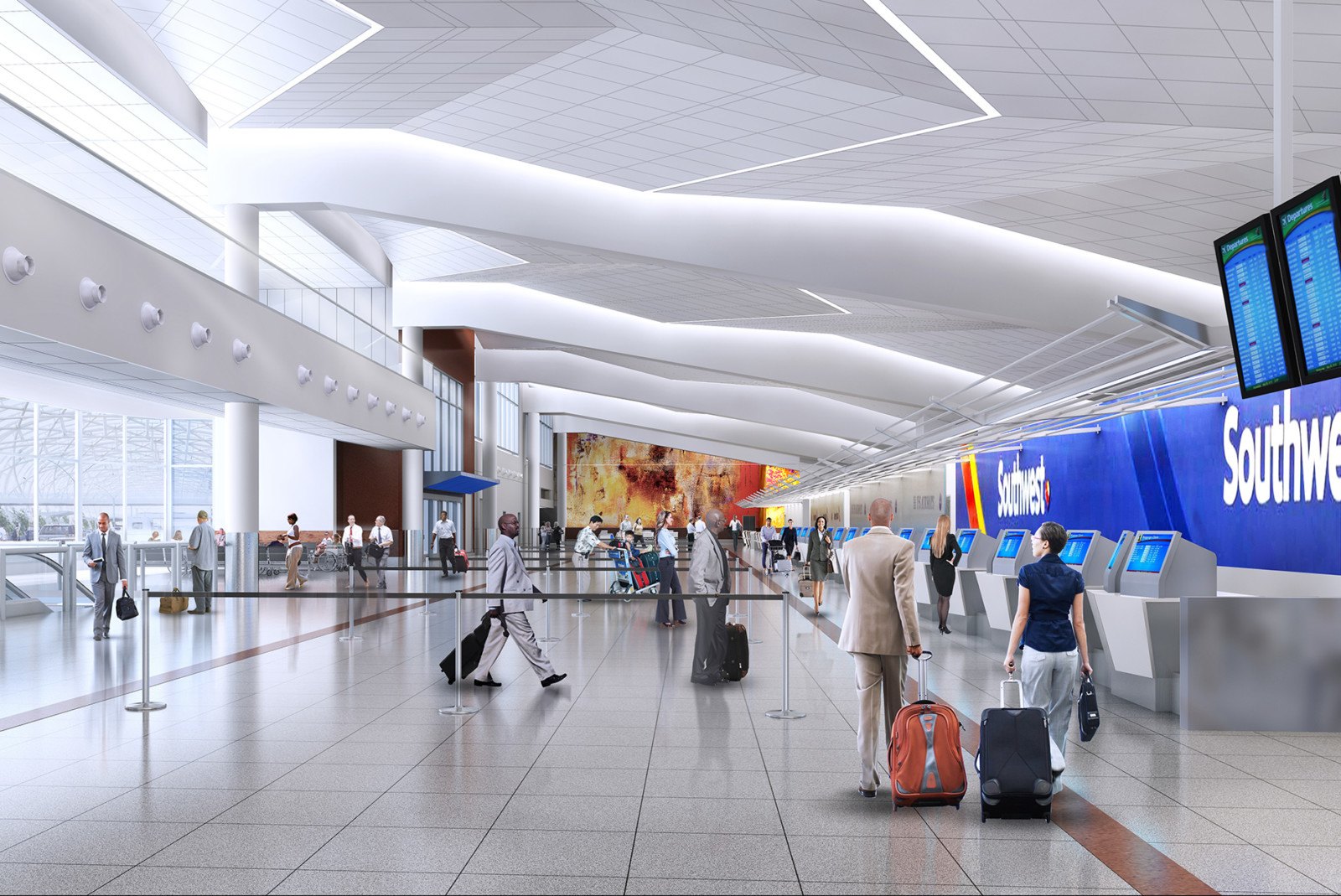Passenger Terminal Today interviewed Ripley Rasmus, senior design principal, and Matt Breidenthal, regional leader of engineering, about HOK leading a joint venture to design the $200 million improvement to Hartsfield-Jackson Atlanta International Airport’s domestic passenger terminal.
Excerpted from Passenger Terminal Today:
Tell us a bit about the project.
RR: A main element of the design is two innovative ETFE-clad canopies, each measuring 864 feet in length, that will cover curbside pick-up and drop-off areas. Clad in translucent ETFE (ethylene tetrafluoroethylene) panels, the two canopies are supported by a contemporary steel frame. ETFE was chosen over glass because the lighter, self-cleaning material reduces the impact on the existing terminal, which supports the canopies, and it will better accommodate structural movement. Inside, passengers will be greeted in the redesigned light-filled atrium featuring a park-like setting, lush with plants and a large circular skylight. The design accommodates both the curb-to-gate weekly business travelers and the leisure traveler.
How have you created a sense of place for arriving and departing passengers?
RR: Creating sense of place is always an interesting conversation at an airport. Oftentimes the best thing we can do is to look out into the natural landscape and see where we are. With a massive terminal like the domestic terminal at Hartsfield Jackson, it’s difficult to access that landscape so the idea of connecting to the sky and greening both the interior space of the atrium and the pathways, as well as the curbside, is one step we’ve taken to connect to the specifics of place. We’ll have crepe myrtle, an evergreen and flowing plant that’s iconic in Georgia, that will connect us to the area. Additionally, that atrium space and the whole of the facility is intended to be a facility for local art and culture.
What were the challenges of designing the canopies?
RR: The primary challenge is to provide shelter and I think we’ve got a great solution for that. The other thing the canopy does, which represents the aspiration of the airport, is to alter the character of the building and the experience that passengers have. We have a canopy that functions beautifully as shelter; it will keep you out of the rain and reduce the amount of sun on the building and curbside. We have done that with an extremely efficient structural system and a collection of ETFE bubbles atop the canopy that will allow you to see both the sky and be sheltered, removing 50 percent of the solar gain.
MB: One early decision that we made was to support the canopy off of the existing structure of the building rather than on a line of 40 new columns and lateral bracing set in front of the building and the re-clad facade. Introducing a new structure rather than supporting on the existing one would have been a lot more expensive and intrusive on the passenger experience. Using a lightweight material like ETFE allows our structure to be as light as possible and was a very intentional move that has enhanced the design.
We had a very aggressive design schedule [eight months], especially for an element like this where you want to achieve a long span and do it beautifully but cost effectively and with a concentration on constructability and minimizing disruption. Particularly when you’re working with an existing terminal, that takes a lot of effort and analysis to get right.
There are three things that contributed to our success on meeting that aggressive schedule: First, Ripley is an incredible designer who really understands structural behavior. We have also developed at HOK a multidisciplinary parametric design tool called STREAM that lets our architects and engineers evaluate hundreds of diverse options and allow us to analyze and optimize each one. That process used to take weeks or months, but this design tool allows us to do the same work in hours. Finally, the airport was on board and very supportive throughout the process. They were excited to explore these options with us and have been great partners throughout.


